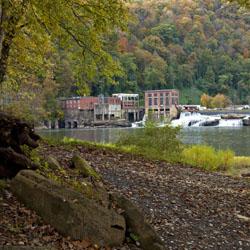Classification of Functional Process Zones in Large Rivers
With time and resources often limited, natural resource managers need reliable information on the quality of rivers in their communities in order to know which rivers are most in need of improvement. Rivers are all unique, and the differences between them can make evaluating their potential for improvement challenging.
When portions of rivers are assessed to determine their condition, it can be difficult to compare two different portions since some of the variability in condition may be due to natural phenomenon. In fact, some researchers estimate that 30 to 40 percent of the differences we can detect in river conditions are due to natural variations.
To solve this problem, EPA's ecological exposure scientists are developing tools to rapidly classify river segments based upon their hydrology and geology. These segment classes are called Functional Process Zones (FPZs).
Using Geographic Information Systems, remote sensing (including satellite images), and statistical information, EPA scientists have identified and classified six FPZs in the rivers of the Kanawha River Basin of North Carolina, Virginia and West Virginia.
They are now conducting field research in these areas to better understand the functions of each portion of the river. The scientists are collecting river data on water chemistry, light penetration and chlorophyll. They are also taking physical measurements and collecting information about the aquatic life of the rivers (e.g., fish, mussels, snails). This information should provide important clues about the health of the rivers including how well the rivers function in providing a healthy habitat for animals, supplying clean water for communities, and maintaining a healthy, stable food web.
EPA scientists are currently refining the tools they used to identify FPZs and plan to make them available to resource managers by the end of 2012. The researchers hope to identify FPZs for every U.S. river by 2015. These tools will provide resource managers with information to better understand river conditions and more efficiently use time and money to protect rivers and the important services they provide.

